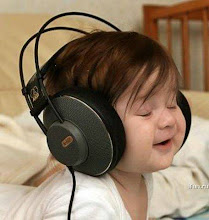Hummel and Other Trumpet Concertos by William Forman (1989)
And I’m back! I’m still really busy at work these days, but I thought I would take a break from my mountain of physician profiles.A Random CD Review from the Stutzman Memorial Library
Hummel and Other Trumpet Concertos by William Forman (1989)
So the Excel spreadsheet spit out album #205 today--William Forman’s recording of the Hummel Trumpet Concerto with the Prague Radio Symphony Orchestra. I must say, it’s probably been years upon years since I’ve heard this disc. My two year experience at music school kind of killed any enjoyment I ever had with regard to playing the trumpet.
I most likely bought this recording back in high school for reference as I prepared the Hummel first movement, (I never did quite master it.) You see, the academic musical world is kind of funny when it comes to musical repertoire. If, as a young musician, you fancy yourself any kind of serious student of your instrument, you will earnestly begin work on the handful or so “chestnuts” of the instrument, mostly written 2-300 years ago, such as the Hummel Trumpet Concerto in Eb. There are all kinds of problems with this entrenched, conservative snobbery but I’ll leave it at that.
Mr. Forman is a little unorthodox with his treatment of this piece in that, (if I remember correctly), he did the tune on a custom-designed trumpet in E and thus did the tune a half-step higher than all the other classical trumpet-playing goons out there. I’ve heard of all kinds of different ways this piece has been done: on a Bb horn, on a C horn, on a period-accurate Eb horn with holes, not valves, blah, blah, blah. To my young musician’s ears that was all much ado about nothing as they all pretty much sounded the same. Still would probably sound the same to me.
Anyway, the Hummel Concerto is one of the top three or four pieces every professional trumpet player has memorized. It’s a nice piece that displays what’s possible with a length of tube and a mouthpiece--fanfares, pithy little motifs shared with the orchestra, a sensual melodicism in the second movement and a virtuoso display of articulation and technique in the third and final movement. All of which are probably the reason trumpet teachers have regarded this piece so highly all these years.
To the current version of me, it’s less a touchstone of trumpet culture and more of a rank-and-file example of Classical Period writing (think 1700-1830s) by an obscure composer of the time.


0 Comments:
Post a Comment
<< Home